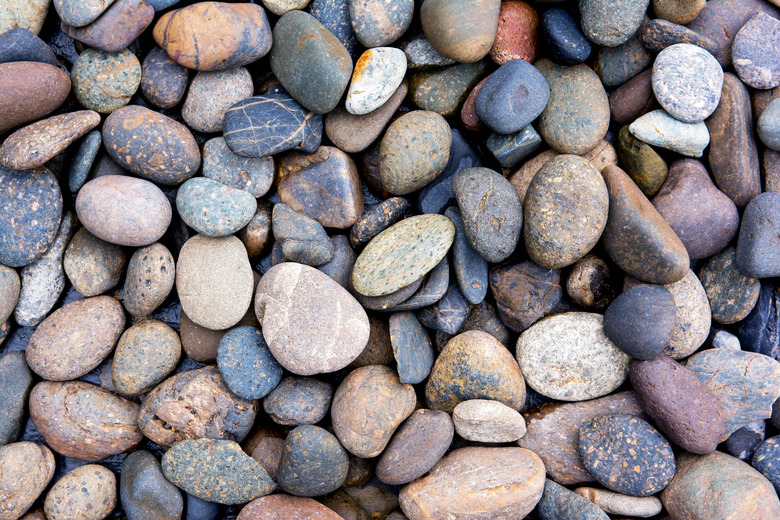How To Lay Down A Tarp Under River Rocks
A lot of work goes into landscaping your yard. River rocks may be a nice addition to a garden, but depending on how you acquire them, they can be expensive. The work that goes into hauling and placing them can also be labor intensive. No one wants to put that much time, money and effort into a project, only to have weeds pop up between each rock. One solution is to lay a tarp underneath the river rocks to serve as a weed barrier.
How to Lay Down a Tarp Under River Rocks
1. Put on Safety Gear
Put on protective gear, including gloves, safety glasses or goggles, a long-sleeved shirt, long pants and closed toe shoes. A hat and sunscreen protects your skin from the sun's rays.
2. Clear the Site
Clear the area of your yard or garden that you want to landscape. The first step to getting rid of weeds is ... well, getting rid of weeds. You will need to use a shovel or tiller or other tools you have at your disposal to dig up the ground. A small tiller is faster than most hand tools and generally will do a more thorough job.
3. Rake and Remove Plant Debris
Rake and remove any remaining grass and weed roots from the garden to prevent their taking hold and attempting to grow underneath the tarp. In the event you are placing or replacing a tarp under existing landscaping, you will have to first fully remove the old landscaping material with a shovel and then begin the process of clearing the ground. If you plan to recycle the materials, pile them on a tarp nearby, ready for reuse.
4. Prepare the Soil and Site
Smooth, build up or dig a trench, depending on your garden design. A flat area should be raked smooth. A rock garden is often designed as a hill. If you're building a dry creek bed, the trench should have gently sloping sides that allow rainwater to flow down the creek bed, then away from the house or other structures.
5. Cover With a Tarp
Roll out the tarp over the area to be landscaped. If the tarp is not large enough to cover the area, you may need more than one. If you use more than one tarp, you will need to overlap the two so sunlight doesn't filter through to encourage weed growth.
6. Staple Down the Tarp
Drive garden staples through the tarp with a hammer. A garden staple looks like a U-shaped nail with two pointed ends and no head. These may be purchased at most local home improvement stores. The garden staples should be spaced approximately one to 1 1/2 feet apart to hold the fabric in place and avoid shifting while placing the river rocks and other materials onto the tarp. You will need to place the staples around the edges and along any overlapped seams between multiple tarps.
7. Create a Border
Create the border for your landscaped area with large landscaping stones or other appropriate material, positioning it so there is no room for weeds to grow between the border and the tarp.
8. Install the River Rocks
Shovel or scoop the river rocks inside the border. Smooth and level or build up the rocks as necessary to fit the landscape design.
Tip
A tarp, while water resistant, is not completely waterproof. For complete water protection, use a pond liner or other waterproof material. If you need the underlayment to be water permeable, like in a rain garden, consider using a landscape fabric instead.
